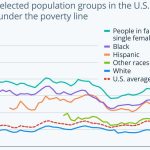Rod Khleif Real Estate Investor, Mentor, Coach, Host, Lifetime Cash Flow Through Real Estate Podcast.
According to the Mortgage Bankers Association, as reported by Colliers, there is nearly $2.7 trillion in CRE debt maturing by 2027. Of this amount, roughly $1 trillion is associated with multifamily properties. For context, $75 billion matured in 2021, the highest amount ever recorded, yet each year through 2027 is looking to surpass this record.
By any measure, the coming wave of debt maturities is historically large and its impact on the multifamily investment space will be significant. In this article, I want to discuss how we got here, why it is problematic and how I believe you can best prepare for it.
How Did We Get Here?
When a multifamily property is purchased for investment, the holding period is usually between three and five years. As a result, the loans used to purchase these assets are structured so they mature around the same time as the planned exit (three to five years).
If you think back three to five years ago, there were two major events happening. The first is historically low interest rates and the second is the onset of the Covid pandemic, which sent interest rates even lower for a prolonged period of time.
During this period, many multifamily investors borrowed new debt or refinanced existing debt in record numbers—taking advantage of the low rates to boost returns. It is these loans that are maturing between now and 2027.
Why Is This A Problem?
When a multifamily loan matures, the borrower typically has two options: Refinance it or repay it. In the current economic environment, neither one of these options look attractive.
Refinancing
Refinancing is not an ideal option because interest rates have risen dramatically over the past 12 to 18 months. To demonstrate this point, Freddie Mac publishes their “Primary Mortgage Rate Survey” each week, which shows the interest rate on the average 30-year fixed rate mortgage rising from 2.65% in January 2020 to around 6.96% as of the time of writing.
This is a problem because a property’s cash flow may not be enough to support higher monthly interest payments at the time of refinance. For example, suppose a property produces $100,000 in net operating income (NOI) and has $50,000 in annual debt service; the result is $50,000 in cash available to distribute to investors.
Now suppose this owner has to refinance their debt at today’s prevailing interest rates and the required debt service jumps to $125,000 while NOI remains constant. The result is a $25,000 annual deficit that must be funded to make the required loan payment.
In this scenario, investors and property owners face a tough choice. They can either inject the additional capital to pay down the loan balance or sell the property to pay off the loan, which brings us to the second issue.
The Current Economic Environment
Selling the property is not necessarily an attractive option either due to current economic conditions. The higher cost of debt, combined with rising cap rates and a potential recession, means that potential purchasers are unlikely to be willing to pay a purchase premium.
To illustrate this point, CBRE publishes a quarterly cap rate survey that shows average cap rates of 4.72% for the most recent quarter of 2023—an increase of 52 basis points from July 2019.
In short, the rising cost of debt, combined with an uncertain economic environment, means that there are many deals that aren’t going to work today that would have worked just a few years ago. When these conditions are considered within the context of the coming tsunami of debt maturities, the signs point to potential distress as markets work their way through the impacts.
What Are The Impacts?
While it can be difficult to know for sure, there are a few impacts that appear probable.
First, overleveraged investors planning to refinance are likely to find that their deals no longer work. Thus, they must pay down the principal balance of the loan, sell the property or try to negotiate a loan modification. For those that don’t have the resources or expertise to do these things, it is likely that loan defaults and property foreclosures will rise.
Second, multifamily lenders are likely to tighten their lending criteria. Even if a deal works at 6.75% interest, it is likely to be increasingly difficult to find a lender who is willing to take it.
Finally, investment activity is likely to slow as investors grapple with the fallout of higher rates and tighter lending standards.
While these impacts are certainly negative, there are some things that investors can do to position themselves to minimize the damage.
How To Prepare
While every deal is unique, there are three things that multifamily market participants can do to brace for the impact of the coming debt maturities.
First, I believe investors should find ways to generate cash. Whether this means raising additional cash from investors or setting aside more from operations, having elevated levels of cash on hand will provide the flexibility needed to pay down debt or take advantage of faltering competitors.
Second, investors who have debt maturing within the next one to three years can start conversations with their lenders early and be honest about their property financials. Having these clear, candid conversations will provide the runway necessary to either come to a mutual agreement or develop a strategy for navigating the sale or repositioning of an asset.
Finally, I encourage investors to reevaluate their budget and rent growth projections for the next three to five years as rent growth is likely to slow and sales prices are likely to be lower than expected—particularly when compared with original underwriting projections. If these changes are going to result in material differences between expected and actual returns, it may be necessary to have early and frequent conversations with investors.
To be sure, there is much uncertainty ahead, but I am a strong proponent of positioning your properties and portfolio in a defensive stance in order to minimize the potential impacts of the upcoming tsunami of debt maturities.
The information provided here is not investment, tax, or financial advice. You should consult with a licensed professional for advice concerning your specific situation.
Forbes Business Council is the foremost growth and networking organization for business owners and leaders. Do I qualify?
Read the full article here









